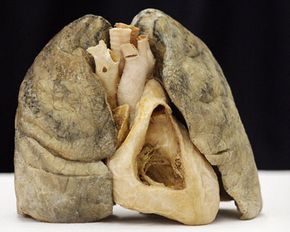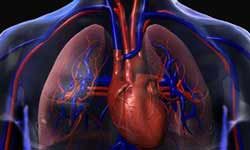Your body is pretty amazing. At any given point you have a great many biological processes going on, such as digestion, respiration, metabolism, and fighting off invading bacteria. Different regions and systems within your body work together to create a state of balance -- just the right amount of blood sugar here, just enough electrolytes there -- to keep you working at peak performance.
But have you ever asked yourself how your body got to be the way it is? Why do you have two of some organs and just one of others? Take the heart and lungs, for instance -- why do you have two lungs but just one heart? Wouldn't it be better to have two hearts?
Advertisement
Your vital organs -- like your lungs, your heart, your pancreas, brain and liver -- are just that, vital. Not only are they vital to life, they are also vital to one another. Your lungs, for example, breathe in oxygen and exhale carbon dioxide (one of your body's waste products). The lungs transfer oxygen to the blood, which is carried to the heart for distribution throughout the rest of the body. The blood carries waste carbon dioxide back to the lungs, where it is absorbed and exhaled. It's a beautiful system. But how did it come about?
It's a very ancient system, says Rutgers University anthropologist Susan Cachel -- and it's not unique to humans. The organ systems we find in most animals contain one heart and two lungs. That is, with the exception of earthworms and cephalopods -- the invertebrate class which includes octopi and squid. Earthworms have five heart-like structures. Cephalopods have three hearts (two to send blood to the gills, and one to send blood to the rest of the body) and no lungs.
Cachel says that the one heart/two lungs system began to emerge about 300 million years ago, when animals first moved from sea to land to escape predators and find new sources of food. From that point on, it's been the norm. But why didn't it continue to change?
In this case, Occam's razor provides the key -- the simplest explanation is usually the right one. Ultimately most animals developed a system of two lungs and one heart (along with the rest of their organs) because that's what was needed to survive and thrive on Earth. People didn't develop two hearts or eight legs or wings because we didn't need them for survival. And we developed two lungs because we need them.
Phylogeny is the study of how the first ribonucleic acid (RNA) strands in Earth's primordial soup developed into humans and other animals. As these animals evolved into such divergent species as birds, insects and humans, the organ systems in those animals remained similar to one another. We still have stomachs to digest food, lungs to breathe air, and kidneys to filter waste. All of this indicates that species -- including humans -- have been shaped and molded specifically to live on Earth.
So does this mean that our system of internal organs is perfect? We know through our study of disease that going from two lungs to one is detrimental to our health, but what about adding an extra heart? Wouldn't that make us better able to survive? Read the next page to find out about what it would be like to have two hearts.
Advertisement



